| |
26 Nov 2014
 When the days in northern hemisphere become shorter and frostier, it’s the time to spark Christmas lights and start preparing for one of the warmest family holidays. Christmas is celebrated differently in various corners of the world. The streets of Europe are decorated with fir twigs and fairy lights, the windows lit up with stars and candles. When the days in northern hemisphere become shorter and frostier, it’s the time to spark Christmas lights and start preparing for one of the warmest family holidays. Christmas is celebrated differently in various corners of the world. The streets of Europe are decorated with fir twigs and fairy lights, the windows lit up with stars and candles.
If entering a house you’ve sensed the fragrance of vanilla and cinnamon, you are sure to be treated to Christmas cookies. Just like the holidays sweets, Christmas music has its own “fragrance”. And it’s very special, varying from country to country. Sometimes it’s rather muffled as in the style of the famous “Silent Night” carol, and sometimes it’s filled with scintillating irrepressible joy like the first chords of Bach’s “Christmas oratorio”.
The spirit of the approaching festivity has seized MusicaNeo too! We invite you to visit our “Featured Sheet Music” section that is now filled with the sound of carols, choirs, vocal and instrumental music for Christmas time. For everyone to find something worthy and interesting, we have added to the list some modern music hits that occupy top positions in the music charts of USA, Great Britain and Germany: Meghan Trainor’s “All About That Bass”, John Legend’s “All of Me”, Hozier ‘s “Take Me To Church”, Olly Murs’ “Wrapped Up”, Clean Bandit ‘s “Real Love”, David Guetta’s “Dangerous” and many other popular songs.
The magic of Christmas inspires many composers of our musicians’ community for creating new music pieces. We should note that from year to year some authors keep composing and publishing new music specially for this holiday. Only within the last month our sheet music catalogue has been complemented with over 100 music compositions in this category. And this means it’s time to take another look at our Christmas sheet music collection!
Among Christmas gifts, there is always one that immediately captures your attention. Be it the colorful package or a perfectly tied bow – everything about it says “Open me now!”. Let that special gift be the amazing video “The World For Christmas” by the Swedish vocal quintet “The Real Group”. At the personal MusicaNeo site of its founder Anders Edenroth you can download the sheet music to this beautiful Christmas composition right now!
If you haven’t decided on the holiday concert program for Christmas and New Year 2015 celebrations, have a look at the Top-15 of Christmas songs that are the most popular at our site. Sheet music to all of the works can be easily found via the site’s search engine.
- А. Adam. O, Holy Night
- Sting & Robert Sadin. Gabriel's Message
- Chris Rice. Go Light Your World
- Gloria Shayne & Noël Regney. Do You Hear What I Hear
- Johnny Marks. Rudolph the Red-Nosed Reindeer
- F. X. Gruber. Silent Night
- James Horner, Mariah Carey, Will Jennings. Where Are You Christmas?
- Jule Styne. Let It Snow! Let It Snow! Let It Snow!
- R. Fisher Boyce. Beautiful Star of Bethlehem
- Jim Boothe, Joe Beal. Jingle Bell Rock
- John Williams. Somewhere in My Memory
- Johannes Brahms. Cradle Song form the “Five Songs” cycle, ор. 49
- Alfred Burt. Some Children See Him
- R. Alex Anderson. Mele Kalikimaka (Merry Christmas in Hawaii)
- Ryuichi Sakamoto. Merry Christmas, Mr. Lawrence
MusicaNeo invites everyone to immerse in the wonderful fairytale world of Christmas music. Let it fill with joy every day in anticipation of the holiday!
The Real Group - Silent Night (from "The World for Christmas")
Photo: Advent wreath, First Advent Sunday by Micha L. Rieser. Source: http://commons.wikimedia.org/wiki/File:Adventskranz-1.Advent.jpg
27 Oct 2014
We would like to voice this impressive figure because it’s now a huge sheet music library that is available to MusicaNeo users from every corner of the world at any time of day and night, and what’s most important – they can use it without spending a penny. To gather such an extensive sheet music collection at home one would need to put in a lot of effort, resources and time. We have analyzed what music scores in MusicaNeo catalogue are free of charge and would like to share our observations with you in this article. What Music Scores Can Be Downloaded for Free?
Among those whose music works can be most often found for free in this 30 000+ list are the names of the most popular composers of classical music – Bach, Liszt, Shuman, Haydn, Handel and other great musicians of the past. Most widely presented are free music works for guitar, piano, violin and cello – both solo and in accompaniment with other instruments, as well as part of chamber ensembles. There are also a lot of song scores, choral and symphonic music works. All free sheet music can be downloaded in PDF format (in some cases in archived ZIP files).
But we would especially like to draw your attention to contemporary composers who published their works at MusicaNeo and offer them for free download. It’s important to note that the number of such authors is pretty big. We would not like to offend anyone, therefore, please excuse us those whose names were not mentioned in this article for objective reasons: over 1200 authors publish their compositions at MusicaNeo and a half of them offer sheet music for free. Free Sheet Music by Contemporary Composers
Here are the TOP-10 authors who uploaded all or almost all of their music works for free access. The sheet music of the composers mentioned below can be easily found with the help of the search service line above. (The following list was created by the number of the uploaded items in descending order at the moment of writing the article)
-
Oleg Kopenkov (714 scores)
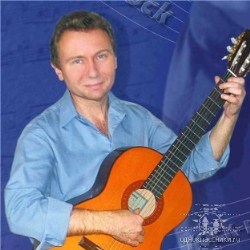
-
André Hüller bei DiBaB (489 scores)

-
Alexander Zatynchenko (244 scores)

-
Svetlana Vetushko (102 scores)

-
Oleg Trunnikov (94 scores)
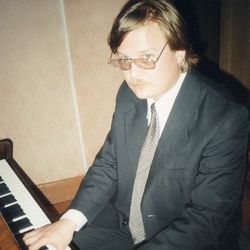
-
Sergej Kolgan (85 scores)
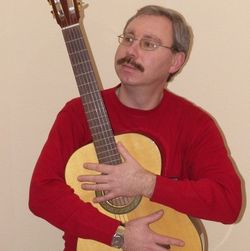
-
Ken Morrison (65 scores)

-
Sviataslau Vitkouski (57 scores)

-
Friedrich Gross (52 scores)

-
Pierre-Paul Daneels (52 scores)

On behalf of MusicaNeo community we would like to thank the above mentioned composers for offering their music, and would also like to express our gratitude to the following authors who, along with a big sheet music collection for sale, offer a great part of their music scores for free: OLC Barcelona Sheet Music, Maurice Verheul, Flore Touin, Vladimir Malganov, Vladimir Polionny, Norbert Sprave, Mikhail Gogolin, Oleg Bogdashin, Arthur Orenburgsky, Michael Reichenbach, Bernd Gehring, Yvonne Johnson, Yury Pronin, Hans-Jürgen Philipp and other users not mentioned in this article but whose names can be found in MusicaNeo catalogue. How to Return Thanks to the Authors?
- If you liked the work you downloaded, do not forget to leave a comment to the sheet music at the bottom of the page. Your every positive review is a tangible reward for the author’s time and efforts, and your support inspires for creating new music masterpieces.
- If composer’s creative work seems close to you, maybe you’ll get interested in other works offered for sale at his/her personal site. Believe us, composer is happy about every purchased music score as it means special interest in his/her music.
- Share the link to free sheet music with your friends-musicians (e.g. using the social networks share buttons). They might be in search of new interesting music too.
- And the most important: perform your favourite compositions at the concerts, competitions, in class, among friends. Inhale life into the music encrypted in the note signs so that as many people as possible could hear these works. That is what every composer aspires to, after all. Let’s help to make it happen together.
In conclusion, we’d like to note that the sheet music archive is constantly growing with new music pieces. Drop by more often not to miss the most delicious!
10 Oct 2014
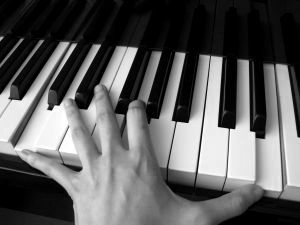 Some of the greatest figures in history are vividly remembered for the achievements they made in a certain sphere of life. And the association with it is usually so strong that we may be surprised to find out that this or that person had left some legacy in other spheres too, maybe less known and not so impressive but it is still there and is worth our attention. As practice shows, a creative person can be truly many-sided and succeed in a few things at once. Some of the greatest figures in history are vividly remembered for the achievements they made in a certain sphere of life. And the association with it is usually so strong that we may be surprised to find out that this or that person had left some legacy in other spheres too, maybe less known and not so impressive but it is still there and is worth our attention. As practice shows, a creative person can be truly many-sided and succeed in a few things at once.
Today we would like to focus on some of the music heritage left by people who were quite far from professional music composing. Those are some geniuses who are rather known as poets, philosophers, astronomers and so on, but who at a certain period of their life sat down to create a music piece (or a few) of their own. Music lures everyone, after all.
Leo Tolstoy. It turns out that the famous Russian novelist was good in binding not only words but music sounds too. Although all he composed is just one and only waltz in F major but that is a remarkable piece of music for an amateur composer. The short one-minute waltz was composed in Tolstoy’s early youth years and was shyly played by Tolstoy to his friend Alelksandr Gol'denveizer and other guests in 1906. It is believed that it was then that Sergei Taneev, a composer, pianist and musicologist with phenomenal musical memory, silently went out of the room and wrote the composition down on a music sheet in order to save it for the future generations. The waltz created by the author of “War and Peace” could have remained unnoticed but for modern musicians who keet it ‘alive’. In 2004, Lera Auerbach, a Russian-born American pianist and composer, recorded the waltz for BIS, together with baritone Chiyuki Urano.
Friedrich Nietzsche. The 19th-century bright mind Friedrich Nietzsche besides philosophizing had a hand in composing as well. Unlike Tosltoy’s waltz that was pretty much to everyone’s liking, Nietzsche’s music was much more controversial. In fact, it caused a lot of criticism. So much criticism that Wagner once stood up and left the room while “The New Year's Echoes” piano duet by Nietzsche was performed, and conductor Hans von Bülow on seeing philosopher’s music score politely asked “Have you no better way to kill time?”. But there were approving reviews too, emphasizing the genius of Nietzsche trickling through his somewhat odd music works. Here is an example of a piano composition by the philosopher – “Heldenklage” (1862).
William Herschel. Astronomy and classical music? Sure. We know William Herschel first of all as a ground-breaking astronomer who discovered Uranus (1781), infrared radiation and built a spectacular telescope, among other accomplishments. But besides that, he left some musical legacy and it’s not just a piece or two: it’s an entire collection of 24 symphonies, a number of concertos and church music pieces! Herschel also used to play a few music instruments – cello, violin, organ, harpsichord and oboe. Though Herschel’s music is not among the popular classics often heard in the music halls today, there are still a few professional recordings of it, like the ones by “The London Mozart Players” or “The Kapellsolisten of Dresden”. Below is Herschel’s Symphony No.8.
Charlie Chaplin. The one of a kind comedian, actor and filmmaker of the silent era had obvious music composing talents that were even rewarded in 1952. Though Chaplin was never able to actually read music, he was still good at composing it. In fact, music to most of his films was composed by Chaplin himself. And the original music to the film “Limelight” even won an Oscar for the Best Film Score. Have a listen to the theme from the “Limelight” movie composed by Charlie Chaplin:
The list of amateur composers is not at all that short and the names of bright ‘unlikely’ composers can be traced throughout the history in all possible spheres. Thus, a few more examples of compositional activity include:
- Benjamin Franklin (a string quartet for 3 violins and cello)
- Henry VIII (a significant number of secular songs and instrumental compositions of Renaissance music, including “Greensleeves”)
- Richard Nixon (a piano solo performed by Nixon himself for the audience in 1961)
- Sir Anthony Hopkins (a classical music album “Composer”)
- Prince Albert (a number of music works dedicated to his wife Queen Victoria)
And the list goes on!
We hope you enjoyed reading about these outstanding figures and the musical side of their lives. It’s never too late to try yourself in something new. Who knows, maybe you have some hidden talents buried somewhere deep inside you. We wish you a lot of inspiration and encouragement in new endeavors, be it music or astronomy!
26 Sep 2014
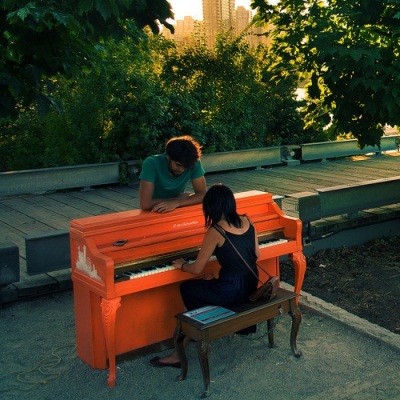 As if often happens, you may spend hours trying to learn to play your favourite music piece but it seems to be getting only worse. The problem often hides in ignoring the important mechanisms of our brain functioning. We repeat what we want and the way we want. In most cases, the image of learning a new music piece looks more or less like this: we play the work from beginning to end in the needed tempo, it seems. However, we don’t manage to wade through. Stumbling at a difficult place, we try to start from where we left or a bit earlier if we can’t resume from where we stumbled. Familiar situation, isn’t it? As if often happens, you may spend hours trying to learn to play your favourite music piece but it seems to be getting only worse. The problem often hides in ignoring the important mechanisms of our brain functioning. We repeat what we want and the way we want. In most cases, the image of learning a new music piece looks more or less like this: we play the work from beginning to end in the needed tempo, it seems. However, we don’t manage to wade through. Stumbling at a difficult place, we try to start from where we left or a bit earlier if we can’t resume from where we stumbled. Familiar situation, isn’t it?
We continue publishing helpful articles for those who learn to play a music instrument on their own, without a teacher’s assistance. Below you will find a few most wide-spread mistakes during such self-teaching. Choosing a Wrong Tempo
Each of us wants to finish what’s been started as soon as possible. And that is clear – everyone would like to enjoy the result of all these efforts the sooner the better. On the other hand, many know that it is necessary to start learning a music piece in a slow tempo. But most often a ‘slow tempo’ is seen as the one that ‘I can handle now’.
In our perception, the scale of tempos looks like a ladder upstairs: the farther, the faster. As soon as we feel comfortable in the new tempo and ‘can handle it’, we try to play in a faster tempo, repeating again and again. This method leads to what musicians call “overplaying”, when even the easiest parts can no longer be performed well.
Advice:
There are a lot of techniques for reasonable distribution of tempo at the practical classes of piano, guitar or any other instrument. We would like to suggest one of them. It is possible to handle the three tempos – slow, medium, and fast – in such a way that in the fast tempo it would be still possible to perform without mistakes. In the beginning, the difference between the three tempos should not be significant. It’s essential to go back to performing in medium and slow tempos. The amplitude can gradually be increased, but the important condition in all the three tempos should be the correct performance. Performing with Mistakes
It’s important to make a firm decision NOT to put up with such performing. Because our brain memorizes our actions and is guided by a simple formula: “if we do it, I must memorize it”. Of course, hearing the false note we realize that we’ve made a mistake. But our brain has already managed to memorize the false phrase pretty well and for long. To erase the mistake from the memory, we would need to repeat the correct version multiple times.
Advice:
Get some patience and try not to be in a rush learning the piece. You should be concentrated on the intoning of music phrases. As it is quite hard to stay focused for a long time, it is necessary to make pauses every 20-25 minutes of the class. Be prepared: there will be mistakes anyway. But keep in mind the fact that careful and correct performing will save you a lot of time and will eventually lead to the necessary result. Repeating the Piece from Beginning to End
Performing of the entire piece is the purpose, not the means. Therefore, no matter how bad we want it, unless you are sure of every single note, don’t get tempted to repeat the new piece from beginning to end as it will inevitably lead to memorizing mistakes that we talked about in point 2.
Advice:
Learning a music piece is not just playing the instrument, it is a thinking process that consists of analysis and synthesis. Every music composition has its structure. Take a pencil and divide the piece into parts that are complete music- and meaning-wise. First make large parts. To find them, pay attention to the change of tonality and tempo that often takes place at the transition from one part to another. If the composition takes up more than one page, each big part will most likely be divided into smaller parts.
Start learning from finished phrases and smaller structures. After the first phrase is learnt, move on to the second one. As soon as you can perform two parts separately, you can unite them in one. But before that, practice the transition from one part to the other, covering a few notes from the first measure of the first phrase. Joining the third with the forth works the same way, as well as joining the first two parts with the second two. Thus, gradually extending the learnt fragments, you will build up the entire piece. The most important here is not to be in a hurry. Try to listen closely to the repetitions and look for new colors every time. Underestimating the Role of the Music Beat
Unfortunately, this ‘invisible’ mistake is most often left unnoticed by the performer. From the outside, it can be perfectly heard that in most difficult places the musician starts playing slower, destroying the measure borders, but to the performer it seems that the entire playing is even and smooth. This is called “time unsynchronization” – the discordance of the real time and its perception by the musician. Most often the difficulties are caused by short durations, nontypical note groupings or the complicated rhythm that can’t be promptly processed by our brain in real time.
Advice:
Learning technically complicated parts use the principle of analysis and synthesis described in point 3. Learn difficult passages and rhythmically complicated (as it seems at first sight) fragments separately. With the help of a pencil mark the notes that fall within the metric parts of the bar. First try to slowly sing the difficult fragment and find out how the notes are placed within the metric parts.
Learning difficult passages should better be started from the off-beat. First learn the off-beat and the strong beat, then the remaining passage leading to the next strong beat. Feel the intonational aspiration to the strong beat.
And the main recommendation: carefully choose the music piece for learning. There will always be time and strength for learning the music you love. And it means that you will be able to surprise your friends and relatives with the splendid performance of your favourite pieces. In the future, we will get back to describing the most common mistakes in learning new compositions and will prepare some other advice on how to avoid them. Stay with us!
Photo: “Piano on the Street”. Author: Asher Isbrucker. Source: Flickr.com, License: Creative Commons 2.0.
|
|
|